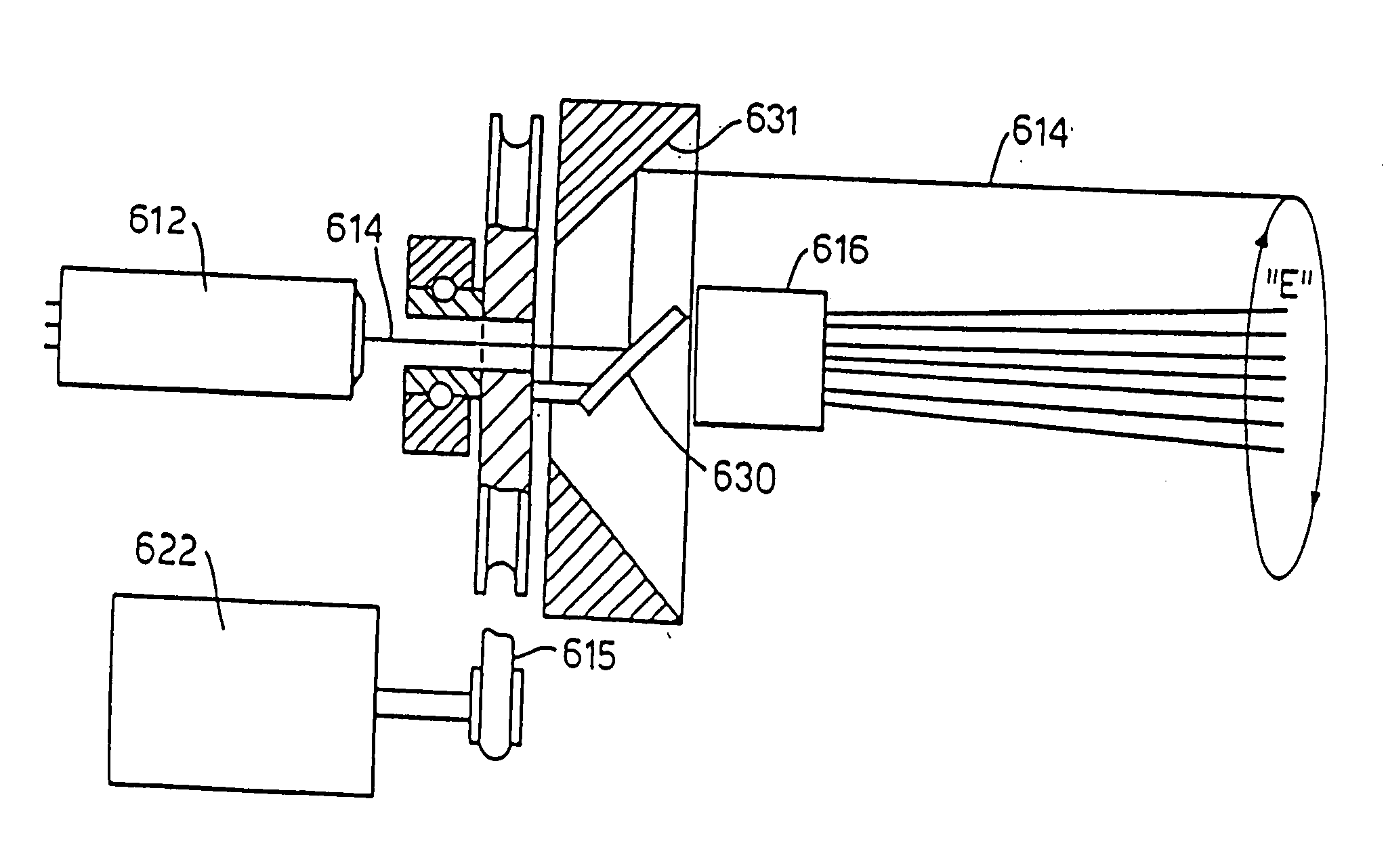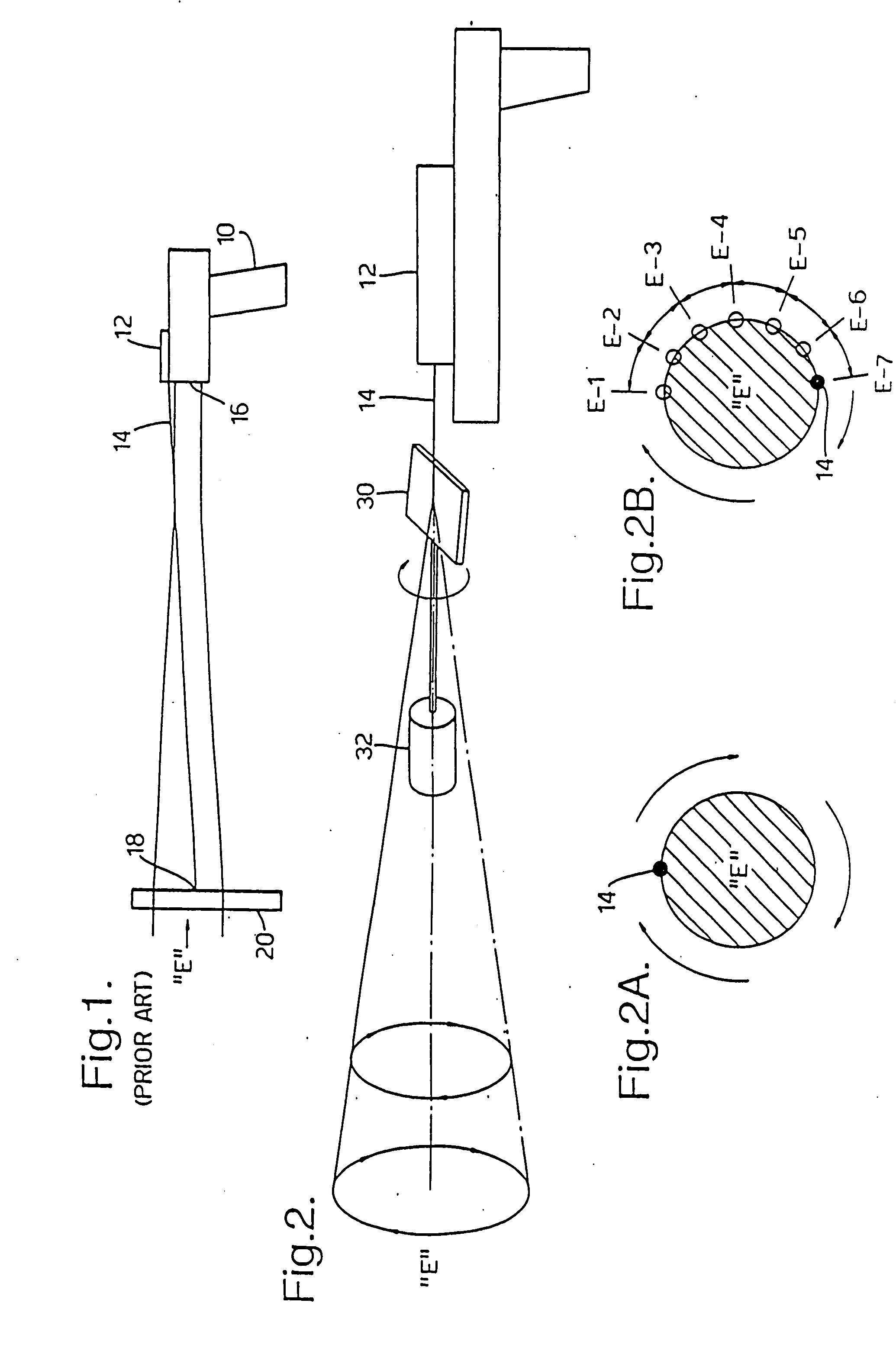Temperature measurement
a technology of temperature measurement and measurement area, applied in the field of temperature measurement, can solve the problems of inaccurate readings, inaccurate measurement, and inaccurate measurement of surface temperature, and achieve the effect of accurate measurement of surface temperatur
- Summary
- Abstract
- Description
- Claims
- Application Information
AI Technical Summary
Benefits of technology
Problems solved by technology
Method used
Image
Examples
Embodiment Construction
[0066] Traditionally, prior art radiometers have long employed laser sighting devices and direction finders to assist in the proper aim and alignment of the instrument. FIG. 1 illustrates and direction finders the operation of traditional, prior art, hand held radiometers. Such a radiometer, referred to generally by reference numeral 10, includes a laser sight scope 12 which emits a laser beam 14 to a spot or target 18 on the surface 20 whose temperature is to be measured. This spot 18 is located in the center of the energy zone “E” which is to be measured by the radiometer 10. The radiometer 10 includes a detector 16 which is connected to conventional internal circuitry and display means (not shown) for conversion, calculation and display of the temperature of the surface 20 calculated indirectly from the energy radiated from the surface within the energy zone E. Such energy is radiated in straight lines in all directions away from the surface 20 and captured with the detector 16 o...
PUM
| Property | Measurement | Unit |
|---|---|---|
| focal distance | aaaaa | aaaaa |
| focal distance | aaaaa | aaaaa |
| surface temperature | aaaaa | aaaaa |
Abstract
Description
Claims
Application Information
 Login to view more
Login to view more - R&D Engineer
- R&D Manager
- IP Professional
- Industry Leading Data Capabilities
- Powerful AI technology
- Patent DNA Extraction
Browse by: Latest US Patents, China's latest patents, Technical Efficacy Thesaurus, Application Domain, Technology Topic.
© 2024 PatSnap. All rights reserved.Legal|Privacy policy|Modern Slavery Act Transparency Statement|Sitemap



